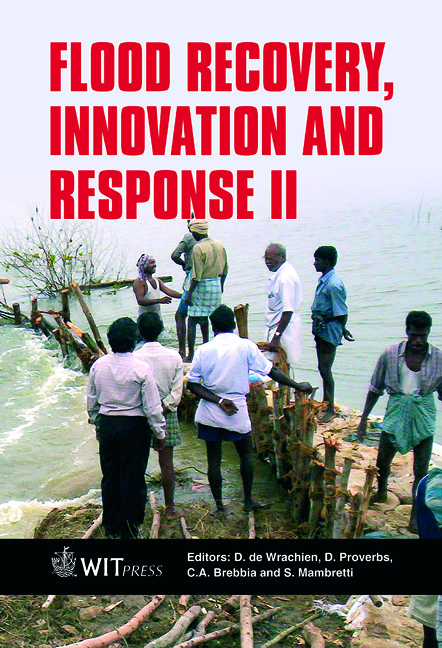SAGE-B: A Dynamic Dam-break Flood Emergency Management System
Price
Free (open access)
Transaction
Volume
133
Pages
9
Page Range
119 - 127
Published
2010
Size
2,895 kb
Paper DOI
10.2495/FRIAR100111
Copyright
WIT Press
Author(s)
G. de Jesus, M. A. Santos & J. Palha-Fernandes
Abstract
The emergency management of a specific dam is generally based on emergency plans that contain static data related to the dam and to all elements associated to the emergency. Fundamental data, such as information about the population located in the areas at risk or the vehicles available for rescue that are located in the areas impacted by the predicted flood, are always changing, so new versions of the emergency plans are frequently issued without achieving an effective update of the required information for emergency management. In order to support and automatically update this process, SAGE-B, a new, dynamic information system that supports dam-induced emergency management, was developed at LNEC. SAGE-B development was based in an open-source framework, Sahana FOSS (http://www.sahana.lk/). It required customizing some of original Sahana modules and creating new ones, tailored to dam-induced emergency management. The platform has a modular architecture developed in open and free technologies, which allows a continuous development and improvement accordingly to any changes that may be issued. The current system contains data management of a dam, elements at risk and resources available. It also supports real-time management of dam-induced emergencies through integrated modules that help to define the level of alert of the dam, and the actions to pursue according to that level. Being a web-oriented system, SAGE-B integrates a geographic information system (GIS) through several technologies, like GoogleMaps, OpenLayers and MapServer. Emergency agents are some of the target users, and can use the GIS modules to track incidents and similar events. Keywords: emergency preparedness and planning, emergency information systems.
Keywords
emergency preparedness and planning, emergency information systems





